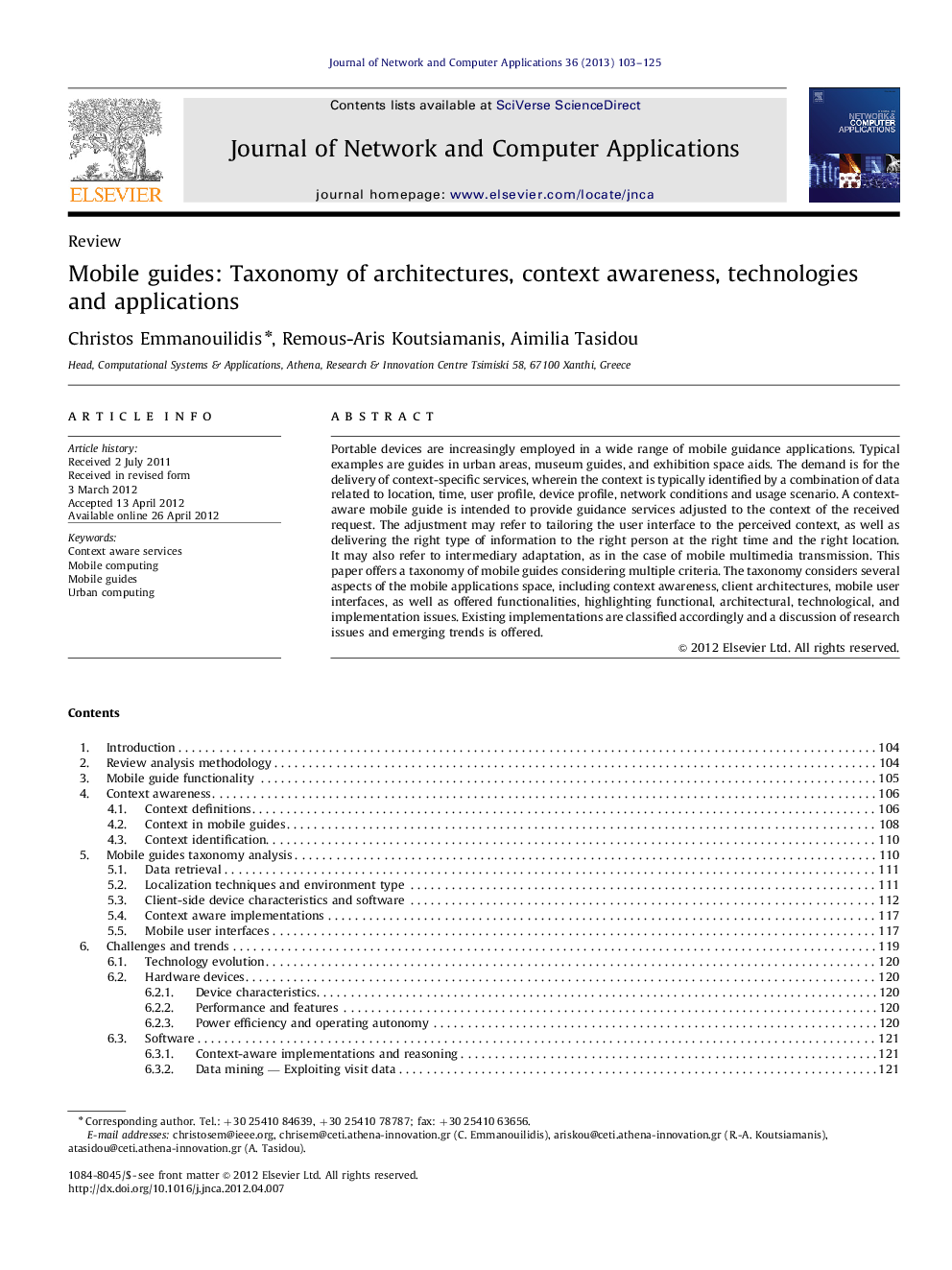| Article ID | Journal | Published Year | Pages | File Type |
|---|---|---|---|---|
| 460004 | Journal of Network and Computer Applications | 2013 | 23 Pages |
Portable devices are increasingly employed in a wide range of mobile guidance applications. Typical examples are guides in urban areas, museum guides, and exhibition space aids. The demand is for the delivery of context-specific services, wherein the context is typically identified by a combination of data related to location, time, user profile, device profile, network conditions and usage scenario. A context-aware mobile guide is intended to provide guidance services adjusted to the context of the received request. The adjustment may refer to tailoring the user interface to the perceived context, as well as delivering the right type of information to the right person at the right time and the right location. It may also refer to intermediary adaptation, as in the case of mobile multimedia transmission. This paper offers a taxonomy of mobile guides considering multiple criteria. The taxonomy considers several aspects of the mobile applications space, including context awareness, client architectures, mobile user interfaces, as well as offered functionalities, highlighting functional, architectural, technological, and implementation issues. Existing implementations are classified accordingly and a discussion of research issues and emerging trends is offered.
